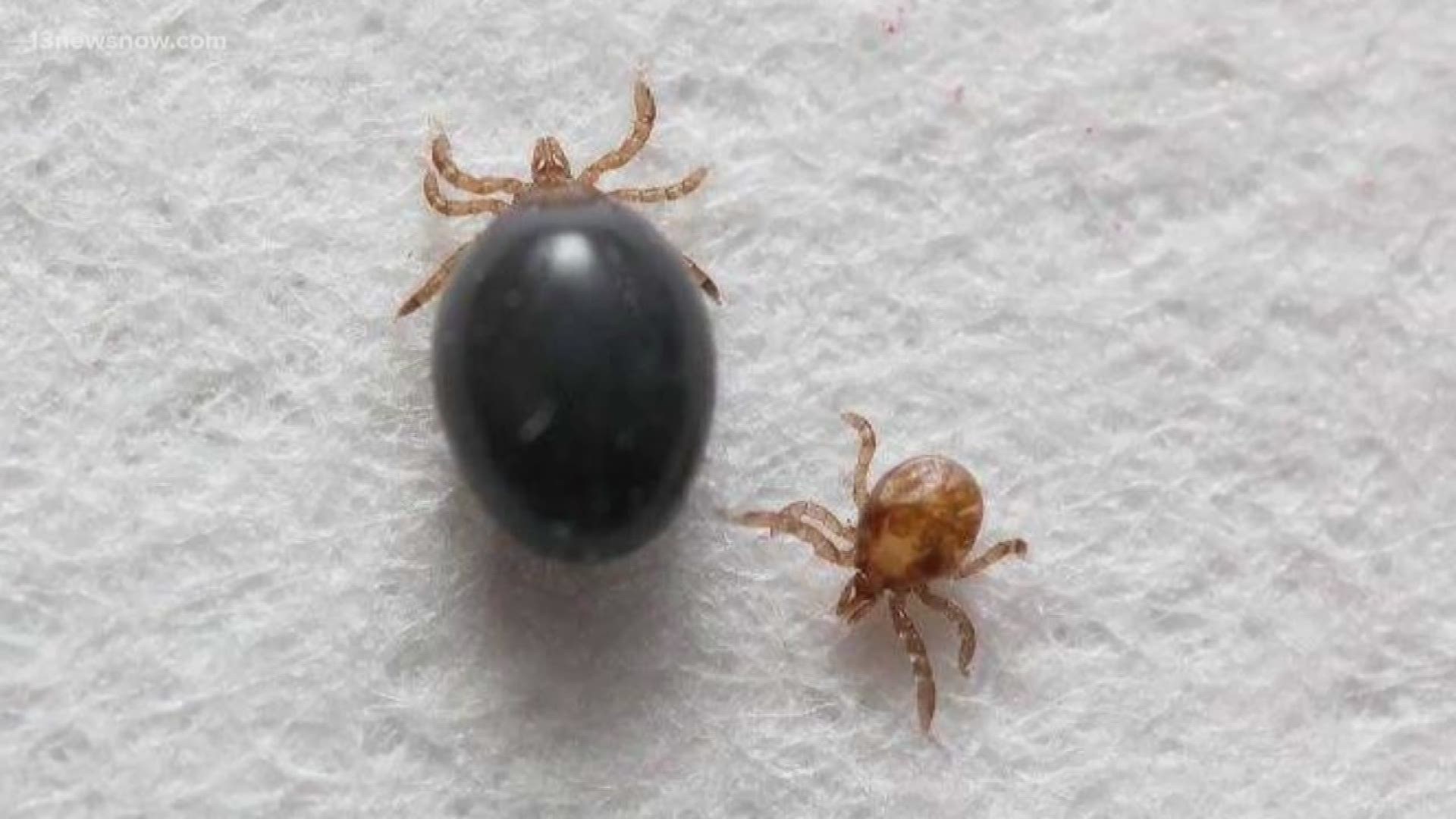WILMINGTON, Del. — Ticks don't just hope you walk by so they can latch on.
They formally quest for a victim by crawling to the top of leafy vegetation all over Delaware. There, they wave their teeny arms in hopes of catching a ride to a delicious meal of blood.
That vision now stuck in your head should be a particularly evocative reminder that tick season has arrived, and health officials are warning it could be worse than ever.
"We never know if it's going to be a terrible tick year or not, but any year is a bad tick year when it comes to trying to make the public aware and educate them on measures to protect themselves from tick-borne diseases," said Paula Eggers, an epidemiologist with the state Division of Public Health.
Spring and summer may be among the worst times of year for tick bites because that's when teeny, tiny tick nymphs the size of a pinhead are active.
"They're the prime culprits because they're just hard to see," Eggers said.
One Delaware scientist is trying to figure out how active and dangerous ticks are in the First State.
Lauren Maestas was hired a few months ago by the Department of Natural Resources and Environmental Control to get a better handle on Delaware's ticks and the diseases they carry, such as Lyme disease.
"As long as you shower within two hours of being outside, your risk of tick-borne disease drops by about 80 percent," he said, as an immediate shower offers a chance to survey the skin for unwanted hitch-hikers. It can take some time — up to 24 hours by some estimates — for a tick to transfer a pathogen to its host.
On a warm June morning, Maestas arrived at Killens Pond State Park in permethrin-impregnated clothing with his pants tucked into rubber boots.
As he dragged a square piece of white corduroy across the foliage at the park, he carefully counted 10 steps before lifting up the square to see which questing ticks had hitched a ride.
"About six in an hour is about normal," he said.
Like Maestas, ticks also are on a mission. Their leaftop questing is more active on humid days.
(As for that weird sensation of insects crawling on your skin while reading this story — that's a fun word, too. It's called formication, he said.)
Maestas so far has identified at least five tick species, two of which are cause for serious concern because they can infect people with dangerous diseases such as Lyme disease and Alpha-gal syndrome, which creates an allergic reaction to red meat. He's gathered about 500 specimens in his two months on the job.
SUMMER IN DELAWARE
Black-legged ticks, commonly known as deer ticks, can cause Lyme disease and bites from infected lone star ticks can lead to Alpha-gal syndrome. They can also carry other pathogens that can cause less common, but more intense illnesses such as ehrlichiosis, a flu-like bacterial infection.
Other tick species found in Delaware include the bird tick, the rabbit tick and the American dog tick, the latter of which is known to spread Rocky Mountain spotted fever.
Delaware, because of its position along the Mid-Atlantic, finds itself in the top 10 states for Lyme disease incident rates. Last year there were 520 confirmed and probable cases of Lyme disease in the First State alone.
Maestas said he's found more American dog ticks and deer ticks in northern Delaware, while southern Delaware seems to be inundated with lone star ticks. In the middle of the state, it's a mixed bag of species, but all species can be found throughout the region.
"There are shifts in the ranges of some ticks," he said, but whether it is due to a changing climate is debated. With milder winters, ticks can emerge earlier, making it seem like people are in for a bad year. Moist conditions can also support a lot of ticks, which are susceptible to being dried out. But too much rain can be bad news for ticks — not all can survive life underwater.
Unlike mosquitoes, which can be targeted through known breeding areas, ticks are everywhere. That's why it's more difficult to manage the population on the ground, Maestas said.
"You don't have a target," he said. "They move all around."
There's also a common misconception that he wants to debunk. Ticks do not commonly fall out of trees onto people: Usually, they hitch a ride while questing atop other plants.
Maestas is starting his surveillance work at Delaware state parks in areas where people are most likely to be exposed to ticks. He also is working with local veterinarians and hunting weigh stations to collect even more samples.
Once those are collected, samples will be shared with public health officials to test them for disease potential.
That data could influence future management strategies to reduce people's risk, he said.
Some strategies in the works revolve around boxes and equipment that can treat mice and deer with something similar to the flea and tick treatment used on pets.
"In the long run it should benefit people because we're primarily focused on state parks, which (can have) a high density of infected ticks," he said. "Then we can warn and manage and reduce the risk of human disease."
___
Information from: The News Journal of Wilmington, Del., http://www.delawareonline.com

